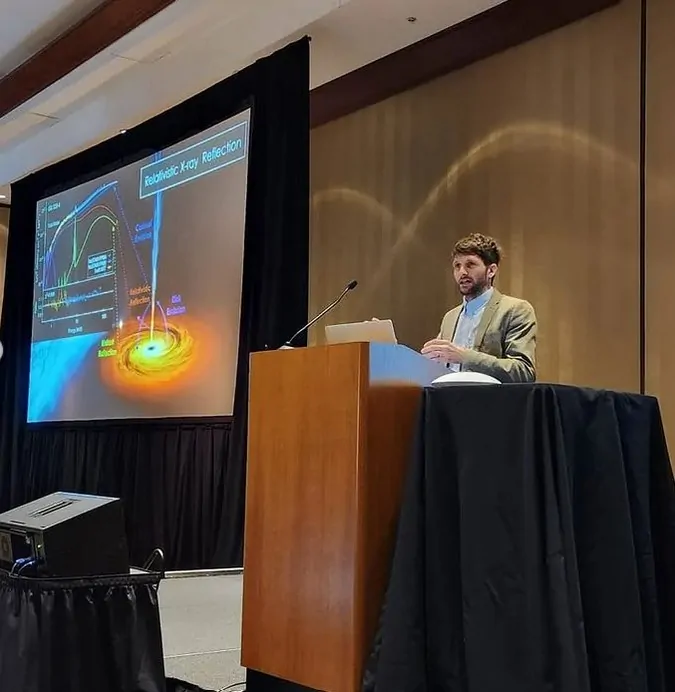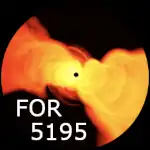April 2024:
Our P2 researcher and PI Thomas Dauser, along with two partner astrophysicists, has received this year’s Innovation Prize from the High Energy Astrophysics Division of the American Astronomical Society.
The prize recognises the development of innovative software tools (the relxill code with xillver treating relativistic reflection and relline addressing ray tracing) for describing emission and radiation from regions of very high gravity around compact accreting objects like black holes and neutron stars. It is awarded approximately every 18 months to honour novel, seminal or revolutionary instrumentation or software that has led to breakthroughs in high-energy astrophysics.

Dr. Dauser was honoured for developing software that allows astrophysicists to interpret X-ray observations of accreting objects accounting for relevant atomic physics and relativistic effects. The observed X-ray radiation stems from ions in the corona very near to a compact object and is relativistically reflected at the innermost part of the accretion disk revolving at nearly the speed of light around the compact object. As this emitted radiation travels through the curved space around the compact object, it experiences relativistic effects that can be measured using X-ray-sensitive satellites such as the European XMM-Newton, the American NuSTAR, the German eROSITA instrument or the future X-ray spectrometer X-IFU onboard the Athena satellite. The relxill software developed by Dr. Dauser and colleagues has become a standard tool for such measurements and was already used in hundreds of scientific publications about AGN, black hole binaries and neutron stars. It enables testing of Einstein’s theory of relativity and inferring properties like spin, ionisation level or density of the compact object or the accretion disk.

DFG Research Unit (Forschungsgruppe) FOR 5195 – Relativistic Jets in Active Galaxies
Funded by the Deutsche Forschungsgemeinschaft (DFG, German Research Foundation)
